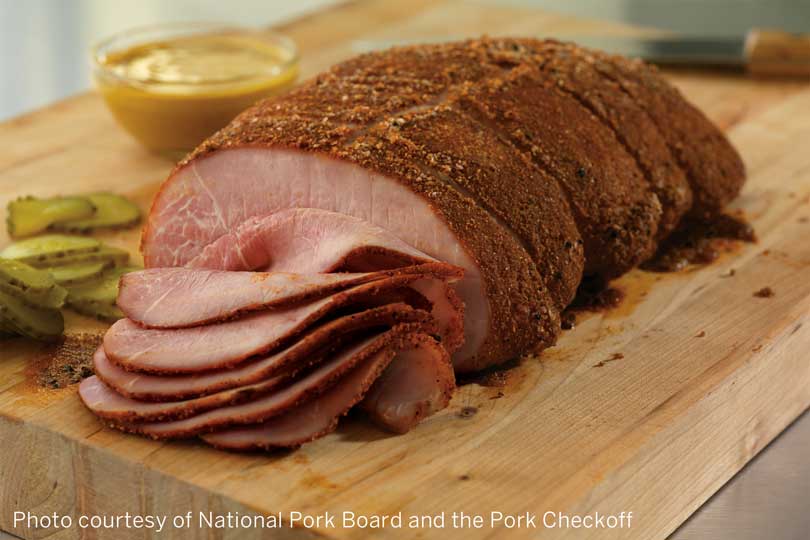By Jessica Domel
Multimedia Reporter
Demand for U.S.-grown pork was strong in the first half of 2018, but retaliatory tariffs from two of the country’s largest pork export markets may dampen trade in the coming months.
U.S. pork exports set a new volume record in April, the same month the People’s Republic of China implemented an additional 25 percent tariff on U.S. pork.
The tariff was stacked onto the standard 12 percent tariff in China.
The 37 percent duty, combined with increased hog production in China, meant fewer purchases of U.S. grown-pork in May and June.
“Pork exports—and especially variety meats—face a very challenging environment in China/Hong Kong, due not only to retaliatory duties, but also because of increasing domestic production in China,” Dan Halstrom, the U.S. Meat Export Federation (USMEF)president and CEO, said.
In June, more than 191,000 metric tons of U.S. pork was exported globally. That’s down 4.5 percent from the same time last year.
“On the positive side, exports are achieving solid growth in most other markets and reached new heights in destinations such as Korea and Latin America,” Halstrom said. “So there is no time to dwell on factors the U.S. industry cannot control. We must continue to find new opportunities in both established and emerging markets.”
Despite the overall decrease in pork exports, one segment did see a slight increase. More than 153,000 metric tons of pork muscle cuts, an increase of three percent, were exported in June.
June exports were valued at $510.4 million. That’s down three percent from last year.
After China implemented its new duties on U.S. pork, Mexico announced its intention to levy 20 percent tariffs on U.S. pork exports, as well.
“Those are two huge volume markets for U.S. pork—Mexico being the largest and China generally the second largest in terms of volume,” Joe Schuele, USMEF vice president of Communications, said in an interview with the Texas Farm Bureau (TFB) Radio Network. “Mexico is a tremendous outlet for U.S. hams. China has in the past been a tremendous market for beef variety meats, feet, ears, tails and things that just don’t command much interest domestically or in a lot of our foreign markets. Losing part of that business will definitely impact the pork industry.”
In June, U.S. pork exports to Mexico fell 7 percent to just under 60,000 metric tons valued at $105.1 million.
Chinese purchases of U.S. pork plummeted 37 percent in June to 28,569 metric tons valued at $70.7 million.
Although data for July exports is not yet available, new pressure and tariffs from both Mexico and China are taking their toll on the market.
On July 5, Mexico increased its tariff on U.S. pork to 20 percent.
“We think that we have reiterated with our customers down there, and we have a very strong customer base in Mexico, the importance of getting that fresh product from the U.S. industry,” Schuele said. “We’re able to take product right off the conveyor belt, put it on a truck and have it into Mexico just hours after it went through the slaughter plant.”
Proximity will help the U.S. keep some of its pork export business to Mexico, according to the USMEF, but the 20 percent tariff won’t simply be absorbed by the final customer.
“That 20 percent tariff that the government is taking off the top has to be absorbed somewhere and likely that’s going to hit everyone in the supply chain,” Schuele said. “In the case of Mexico, we’re hopeful we can keep those volumes up, but there’s no question that margins for really everyone involved are likely to narrow as those transactions have to take into account that 20 percent tariff.”
Unfortunately, the situation in China is much different. The two nations are an ocean apart, and U.S. pork faces higher tariffs in the competitive market.
“In China, their rate is really a prohibitive 62 percent. It was already a 12 percent tariff that everybody generally pays. Then they tacked on an extra 25 percent in April and another 25 percent in July,” Schuele said. “It’s pretty obvious that when you’re trying to compete in a very competitive market, paying 50 percentage points additional in tariffs is a tough th

